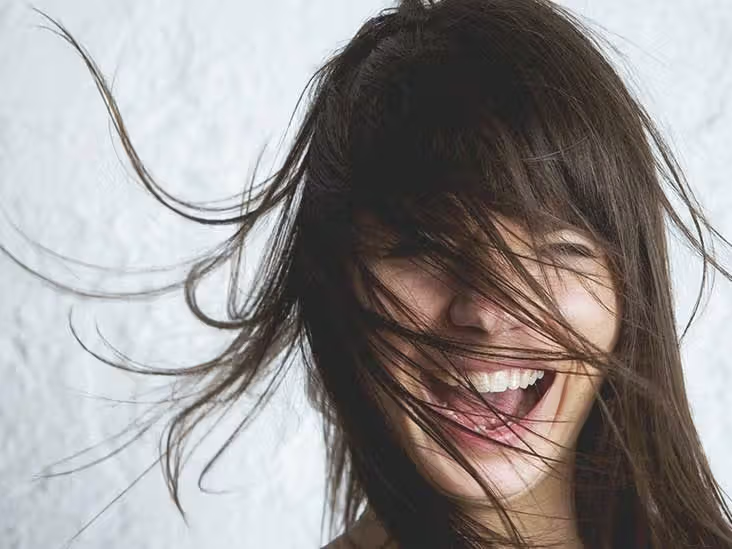Causes of Hair Loss in Teenagers: Treatment and Prevention
Causes of Hair Loss in Teenagers: Treatment and Prevention Hair loss in teenagers is more common than many realize and can be distressing at such a young age. While it’s natural to shed some hair daily, excessive hair loss can indicate underlying issues. Understanding the causes, available treatments, and preventive measures is crucial to managing and reversing hair loss in teenagers. Common Causes of Hair Loss in Teenagers 1. Hormonal Changes During puberty, hormonal fluctuations, particularly in testosterone and DHT (dihydrotestosterone), can shrink hair follicles and lead to hair loss, especially in boys. Conditions like polycystic ovary syndrome (PCOS) in girls can also contribute to hair thinning. 2. Nutritional Deficiencies Lack of essential nutrients like iron, zinc, vitamin D, and protein can weaken hair, leading to breakage and hair fall. Crash diets or poor eating habits can exacerbate these deficiencies. 3. Stress High levels of academic, social, or emotional stress can trigger telogen effluvium, a condition where hair prematurely enters the resting phase and sheds. 4. Genetics A family history of androgenetic alopecia (pattern baldness) can lead to early onset of hair thinning in teenagers. 5. Scalp Conditions Dandruff: Excessive dandruff or seborrheic dermatitis can cause inflammation, weakening hair roots. Fungal Infections: Conditions like tinea capitis (ringworm) can lead to patchy hair loss. 6. Overuse of Hair Products and Heat Styling Excessive use of harsh hair treatments, dyes, or heat-styling tools can damage hair, causing it to break and fall out. 7. Medical Conditions and Medications Alopecia Areata: An autoimmune condition where the immune system attacks hair follicles, leading to patchy hair loss. Thyroid Disorders: Hypothyroidism or hyperthyroidism can cause hair thinning. Certain medications, such as those for acne, depression, or other illnesses, can have hair loss as a side effect. 8. Poor Hair Care Habits Frequent use of tight hairstyles like ponytails, braids, or buns can cause traction alopecia by pulling on the hair roots. Treatment Options for Hair Loss in Teenagers 1. Identify and Treat Underlying Causes Consult a dermatologist or healthcare provider to diagnose medical or nutritional causes. Treating these conditions can help reverse hair loss. 2. Medications Minoxidil: Often recommended for androgenetic alopecia, it stimulates hair growth. Antifungal Treatments: For fungal infections, antifungal shampoos or oral medications may be prescribed. Steroid Injections or Creams: For alopecia areata, corticosteroids can suppress immune system activity to encourage regrowth. 3. Nutritional Supplements Iron, biotin, zinc, and vitamin D supplements can address deficiencies contributing to hair loss. Protein-rich diets also promote stronger, healthier hair. 4. Scalp Care Use gentle shampoos and conditioners to avoid irritating the scalp. Medicated shampoos with ketoconazole or salicylic acid can treat dandruff and seborrheic dermatitis. 5. Hair Care Adjustments Reduce the use of heat-styling tools and chemical treatments. Opt for wide-tooth combs and gentle detangling methods to prevent breakage. 6. Stress Management Encourage teenagers to adopt stress-reducing activities like yoga, exercise, or hobbies. Adequate sleep and relaxation techniques can improve overall hair health. Preventive Measures for Hair Loss in Teenagers Maintain a Balanced Diet Include foods rich in iron (spinach, lentils), omega-3 fatty acids (salmon, walnuts), and biotin (eggs, almonds) for healthy hair growth. Adopt a Gentle Hair Care Routine Avoid tight hairstyles and harsh treatments. Wash hair 2-3 times a week with a mild shampoo to keep the scalp clean without over-drying. Protect Hair from Damage Use heat protectants when styling. Minimize exposure to harsh weather by wearing hats or scarves. Address Dandruff Early Treat dandruff promptly to prevent inflammation and hair weakening. Avoid Crash Diets Sudden calorie restrictions can lead to hair loss due to nutritional deficiencies. Stay Hydrated Drinking enough water helps maintain scalp hydration and hair strength. Regular Scalp Massages Massaging the scalp improves blood circulation and promotes healthier hair follicles. When to See a Doctor? If hair loss persists or worsens despite home care, consult a dermatologist. Sudden or patchy hair loss, significant shedding, or scalp irritation should be addressed promptly to rule out underlying medical conditions. Conclusion Hair loss in teenagers can be alarming, but it is often treatable with proper care and medical attention. By addressing the underlying causes, following a healthy hair care routine, and seeking professional help when needed, teenagers can restore their hair’s health and confidence. If you’re experiencing hair loss, La Fameux Derma Clinic offers advanced treatments, including PRP therapy, scalp analysis, and tailored hair restoration plans. Schedule your consultation today to regain control over your hair health!







